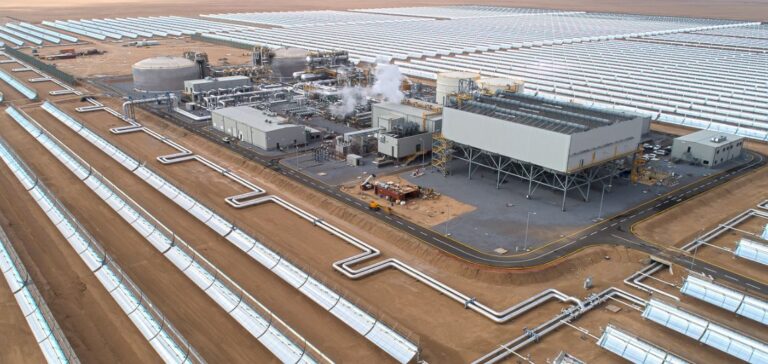In a strategic move to reduce its dependence on fossil fuels, Kuwait Oil Company (KOC), a subsidiary of Kuwait Petroleum Corporation, is preparing to implement an ambitious 1 GW solar power project. This initiative is the fruit of a memorandum of understanding signed recently with the Ministry of Electricity, Water and Renewable Energies, heralding a new era for renewable energy in the region.
Partnership objectives
The memorandum aims to establish close cooperation between KOC and the Ministry, with a view to overcoming the challenges associated with advancing renewable energy projects. The agreement includes the connection of solar power plants with a combined capacity of 1 GW, marking a significant step in Kuwait’s energy transition.
Impact on the energy sector
With its current total dependence on fossil fuels for energy production, Kuwait is at a turning point. The project will not only help meet the country’s target of generating 15% of its energy from renewable sources by 2030, but will also have a positive impact on energy security and environmental sustainability.
The 4.5 GW Shagaya Project
In parallel, the Kuwait Authority for Partnership Projects (KAPP), in cooperation with the Ministry of Electricity, launched a tender to develop 1.1 GW of solar photovoltaic capacity. This project is part of the larger Shagaya solar project, which aims to install 4.5 GW of solar capacity, demonstrating Kuwait’s commitment to renewable energy.
Implications for the regional energy market
This initiative could serve as a model for other Gulf nations, where energy diversification is becoming crucial in the face of depleting fossil fuel resources and growing pressure to reduce carbon emissions.
Kuwait’s commitment to solar energy, illustrated by the 1 GW project and the development of the Shagaya project, reflects a significant transformation in the country’s energy policy. These efforts to diversify energy sources and reduce emissions are essential to meet growing energy demand and for long-term environmental protection.






















